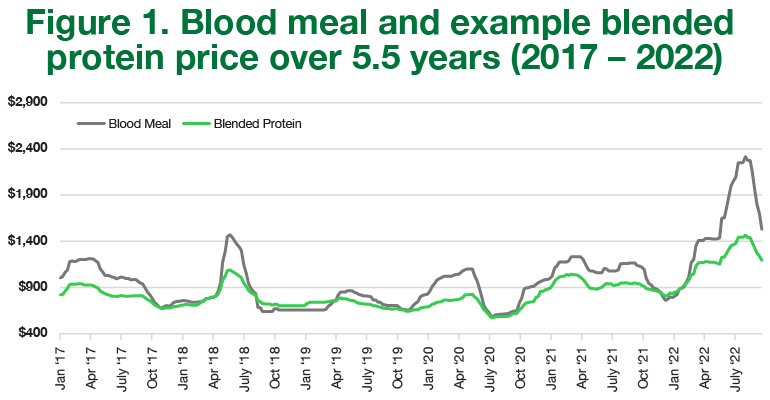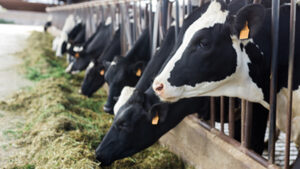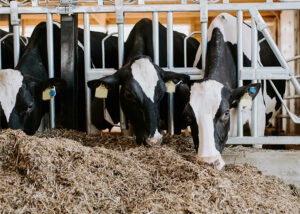For decades, blood meal has been the go-to bypass protein in dairy diets. But with regular supply challenges and record-high pricing earlier this year, many nutritionists and producers are looking for ways to stretch their bypass protein dollar. Some have turned to soy proteins; however, these markets are not immune to pricing fluctuations or nutrient variability typical of high-protein single ingredients. Others have had great success relying on blended bypass protein options.
The benefits of blended proteins.
Blended proteins can provide the same rumen-undegraded protein (RUP) and amino acids that nutritionists traditionally turn to blood meal for, while providing improved product consistency and pricing insulation compared to single ingredient options.
“With a blended protein, you’re not putting all your eggs in one basket,” said Clayton Stoffel, Technical Service Manager at Papillon Agricultural Company. “A blend offers protection from drastic price fluctuations like we’ve seen with blood meal in the recent months.”
For example, since 2017 blood meal has averaged around $1,000/ton and ranged between $600 and $2,500/ton. During the same time, a comparable blended protein averaged around $850/ton, ranging between $550 and $1500/ton (Figure 1). This is due to the diversification of blends using a variety of high-quality animal rendered byproducts like blood meal, pork meat and bone meal, as well as hydrolyzed feather meal with plant proteins and rumen-protected amino acids. Blended proteins also allow nutritionists to target specific amino acid profiles beyond lysine and histidine typically associated with blood meal.

Gemini Proteins vs. blood meal.
Papillon recently conducted a commercial trial to evaluate the economic impact of feeding a blended protein in their Gemini Proteins™ line as compared to high-quality blood meal. The Gemini Protein was designed to deliver a similar level of MP and ME milk compared to blood meal when included in the diet at an equal rate. The trial was conducted on a dairy in the western U.S. and utilized six pens of roughly 250 cows each in a crossover design, where cows were fed each of the two treatments for 21 days.
Results of the trial demonstrate that equivalent production can be achieved when feeding Gemini Protein compared to blood meal. Cows on the Gemini Protein treatment consumed 0.6 lb. less feed and produced 0.8 lb. less energy-corrected milk compared to the blood meal treatment. This resulted in equivalent energy-corrected dry matter efficiency between the two treatments (Figure 2). Protein concentration was not affected by treatment, and fat concentration increased slightly with Gemini Protein.
The economic impact.
When looking at the economics of the trial, the differences are substantial. At the time of the trial, the price of blood meal was over $400 more than that of the Gemini Protein. This, coupled with the reduction in feed intake, resulted in a feed savings of $0.34/cow. Milk income was also down slightly by $0.21/cow. The end result on this dairy was a net IOFC increase of $0.13 when Gemini Protein was fed (Figure 3).
The results of this trial are not isolated to situations where blood meal prices are high. Based on historical ingredient and milk prices, if the dairy had used this Gemini Protein over the last 2.5 years when blood meal prices were lower, they still would have seen an average IOFC increase of $0.08. Regardless of the price of blood meal, bypass protein blends are a great tool for nutritionists and producers looking for customizable options that increase the value of their bypass protein dollar.
Click here to view the original article on Feedstuffs.







